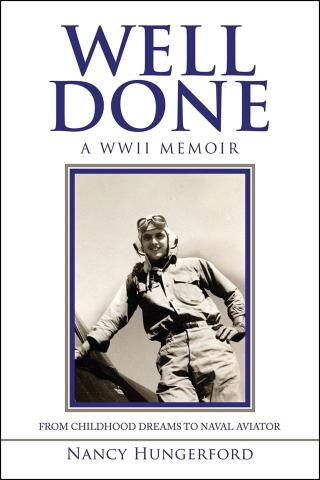Alpha: Eddie Gallagher And The War For The Soul Of The Navy Seals
David Philipps. New York: Random House, 2021. 480 pp. Notes. Index. $28.99.
Reviewed by Lieutenant Colonel Dillon Fishman, U.S. Marine Corps Reserve
Navy SEAL Chief Eddie Gallagher’s 2019 court-martial acquittal for the alleged murder of a captured ISIS fighter ended a highly publicized war crimes trial. As Proceedings readers likely know, a presidential intervention and the sacking of Navy Secretary Richard Spencer followed. But the absence of nuance in media coverage virtually guarantees that most people know less than they think they do about the underlying facts of Gallagher’s case.
The story began in 2017, when ISIS was being cleared out of Mosul, Iraq’s second-largest city. The plan was to surround the city, move in, and destroy the enemy. SEAL Team 7’s Alpha Platoon, led by Gallagher, was eager to get in the fight. Having trained dozens of SEALs as an instructor at BUD/S, Gallagher was domineering. Alpha SEALs even joked that their nominal leader, Lieutenant Jake Portier, was like Gallagher’s “battered wife.”
In Iraq, problems emerged. Gallagher repeatedly ordered the SEALs to turn off their trackers to get closer to the fighting and into restricted areas where they were not allowed to operate. Gallagher had them provide false locations to higher ups. When one of the men was shot in the hip, Gallagher would not allow his platoon to call for a medevac because it would reveal their unauthorized position. Gallagher’s other documented misdeeds included his addiction to tramadol, his use of steroids and uppers, his requests to receive the Purple Heart for minor injuries (including a cut from his own knife), repeatedly shooting at unarmed civilians, and stabbing an injured ISIS prisoner.
The book contains three themes, all worth considering carefully: Gallagher, the SEALs, and the military justice system. The meticulous reporting about Gallagher, including on a trove of text messages from Gallagher himself, is damning. Likewise, the book offers plenty to consider about the SEALs and the unresolved identity conflict within the organization. Torn between the cultures of insular pirates and devoted patriots, their fate is yet to be determined.
But it is the third theme, about military justice, that warrants serious reflection. The theme showcases the struggle within the SEALs on a larger scale. While Gallagher’s trial was nominally about a murder, it also raised bigger questions about justice—and the meaning of good order and discipline. Why are there laws in war? Why do Americans follow rules against a lawless enemy? Will Americans permit their forces to become unmoored pirates?
The response to those question necessarily depends on your views about the profession of arms, the law of war, and American values. Professional warfighters, including the senior leaders who handled the prosecution of Gallagher, uniformly wanted accountability. Senior SEALs wanted Gallagher to lose his trident, while his most ardent apologists were largely outsiders unfamiliar with the law, the system, and the culture. Thus, Gallagher’s case is emblematic of the consequences of dangerous adulation of the military and the worrisome civil-military divide.
Gallagher’s case also exemplifies the difficulty of prosecuting military crimes, particularly those involving special operations forces. Moreover, war crimes are the crucible of justice. Evidence must be gathered from remote locations. Invariably, witnesses worry about implicating themselves, snitching on their friends, or helping the enemy. Loyalty to friends, units, and the Constitution collide. In Gallagher’s case, though Alpha comprised 22 men, only seven testified. Of those, the most important one reversed his testimony after he received immunity.
Philipps exposes cracks that cast doubt on the effectiveness of the system. Military attorneys, such as the prosecution team in the case, are tasked with complex cases beyond their experience level. Criminal investigators face barriers of time and space in trying to find evidence on a distant battlefield. And commanders in the military cannot respond publicly to a one-sided defense narrative in the court of public opinion for fear of violating unlawful command influence prohibitions. The book is a sobering must-read case study about the meaning and future of ethics in the military and the rule of law in the United States.
Lieutenant Colonel Fishman, a Marine Corps judge advocate, is completing a PhD in leadership studies. He deployed twice to Afghanistan and once on board the USS Tortuga (LSD-46). All views are personal and do not represent the position of any government agency.
Poisoner in Chief
Stephen Kinzer. New York: St. Martin’s Press, 2020. 290 pp. Notes. Biblio. Index. $18.99.
Reviewed by Captain Joshua Himes, U.S. Navy
Renowned author Stephen Kinzer delivers a disturbing yet profound account of the evolution of one of the Central Intelligence Agency’s (CIA’s) most controversial projects, MK-ULTRA, and its enigmatic leader, Sydney Gottlieb. Kinzer traces Gottlieb’s life from his early days in the Bronx, through the evolution of the macabre ULTRA mission and exploits, and beyond—to his time leading the Technical Services Division. His efforts shed light on how an unbelievable mind-control project could have been both conceived and operated beyond the reach of accountability outside the CIA.
Kinzer builds helpful context on the evolution of MK-ULTRA, tracing its roots in the transition from World War II and some of the more dubious initiatives to enroll Nazi and Japanese medical experts, into the Cold War and fears of Russian breakthroughs in “brain warfare” that drove extreme experimentation and served as the catalyst for the intensity and urgency of the mind-control program.
The links to famed spies Allen Dulles and Richard Helms are woven throughout, reflecting Gottlieb’s connection to their success and hence the freedom of ULTRA to pursue increasingly ambitious and brazen initiatives. These initiatives, started under the precursor Bluebird program in clandestine prisons overseas, ultimately expanded through a deliberately complex and convoluted network back into the United States, where experiments and funding were obfuscated to protect the linkage to ULTRA. Gottlieb was able to remain in the shadows while still ensuring controlled clinical conditions were established in countless hospitals and prisons for his mind-control initiatives.
Although this program was not disclosed until the late 1970s, Kinzer does highlight one instance in which Director Dulles informs the Secretary of Defense in 1955 of the existence of MK-ULTRA. It is unclear, however, if this was intended to expand the secretive effort or to limit liability, as he clearly understood the risk. He described the active program leveraging powerful “psychochemicals” that affected the human mind and even cited LSD in particular, which they believed had great promise to control the mind. Although the degree of candor was remarkable, the note failed to describe the extent of the interrogations, secretive experiments (including the unwitting victims), or hospitals and prisons that had become part of the complex web of Gottlieb and the CIA.
Kinzer also covers in-depth congressional efforts to rein in the program, as well as the ironic unfettering of LSD from ULTRA’s experimental network into the counterculture society and psychedelic parties that developed in the late 1950s.
Gottlieb’s career was not solely defined by his work on the mind-control project. His chemistry expertise and work with technical employment capabilities led to his leadership of the Technical Services Department when Richard Helms was tapped as CIA director in 1966. His tireless work ethic and administrative skill were instrumental in the following years in building capabilities to compete with the Soviets, facilitate assassination plots, and run spy operations globally.
Gottlieb ultimately will be forever linked to MK-ULTRA and its Manchurian Candidate mission. It is difficult in hindsight to fully capture the fear of the Soviet menace and perceived existential threat that drove the extreme unethical and horrific actions taken by Gottlieb and his network. Kinzer points out in his concluding thoughts that this was not the first or last time extreme measures would be taken to protect a nation at risk, only to be recalibrated and questioned when the panic subsides.
It still seems incomprehensible that these professionals did not appreciate the highly immoral nature of the work. Lawsuits against ULTRA began in the 1980s from prisoners in Atlanta who claimed to be unwitting subjects in drug experiments and suffered from paranoia, flashbacks, and psychosis for decades. The use of “expendable” subjects in many locations seemed to be an acknowledgment of the horrific nature of the work.
Kinzer leaves us with a sense of the tragic and enigmatic figure that was Sydney Gottlieb—in fact, even in
death, there is a shroud of mystery. There is conjecture that he poisoned himself knowing the scrutiny, lawsuits, and condemnation that were to come. Like his life, this book was fascinating, and I would expect a Hollywood script to follow.
Captain Himes is a career naval intelligence officer. He is currently serving as the Carrier Strike Group 12 information warfare commander.
Well Done: A WWII Memoir, From Childhood Dreams to Naval Aviator
Nancy Hungerford. Bloomington, IN: Xlibris, 2021. 239 pp. Photos. $14.99.
Reviewed by A. Denis Clift
Ensign Robert Hungerford had just learned to fly Hellcats when he and his squadron, VF-13, “the Fighting 13th,” joined the new aircraft carrier USS Franklin (CV-13) in early 1944. “The following is an excerpt from my personal log,” he wrote, “which I began keeping when we left Norfolk, Virginia, heading west for combat.”
On 13 October, out in the Pacific ready to fly another strike in support of the Leyte Gulf occupation,
At 1000, general quarters sounded. I ran to the ready room from church and then onto the hangar deck, got into my gear, and manned my plane. We returned to the ready room, then returned to our planes and started the engines again, ready to take off. Then I spotted a Japanese fighter at about one thousand feet coming right down toward the deck. I frantically struggled out of my gear just as a bomb grazed the edge of the outboard elevator on the port side and exploded. A wave of smoke from the explosion went by as I ran like hell into a compartment on the deck and dived for cover with the men who were already there.
His squadron had returned to the United States for new pilots and retraining, when, on 19 March 1945, the Franklin was nearly destroyed:
A single Japanese Judy aircraft suddenly pierced its cloud cover and dropped two 550-pound semi-armor-piercing bombs before the ships gunners could fire. Scenes of indescribable horror swept the ship—832 dead, almost 300 wounded.
It took our squadron time to absorb all of this. We had lived, celebrated, and worked with many of those on board. While each of us dealt with sorrow in our own way, I had one thought. There but for the grace of God go I.
In Well Done: A WWII Memoir from Childhood Dreams to Naval Aviator, Nancy Hungerford, first Robert Hungerford’s wife, then his widow, has taken Bob’s logs and journals, those of World War II squadron members, earlier family records, and later moments from their marriage to capture the very engaging life of a youngster yearning to fly, a naval aviator, a patriot, and an elder slipping away with dementia. Photographs capture the flow
of the different life chapters. “Organize your logs and diaries,” she told her husband. “We are going to write a book.”
As a memoir, the book is written in his first person and wartime combat aviator’s vernacular. Moments such as the tension, drama, and euphoria of the first carrier-qualifying landings, and—later in the war—flying over Iwo Jima, being hit by a Japanese Zero, and, against the odds in his wounded plane, making an emergency carrier landing are excellent reading. Well Done is a splendid life story nicely presented by a dedicated and talented partner in much of that story.
Mr. Clift is the U.S. Naval Institute’s vice president for planning and operations and president emeritus of the National Intelligence University.








